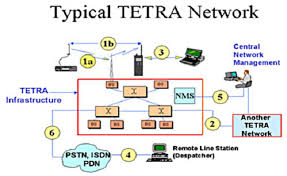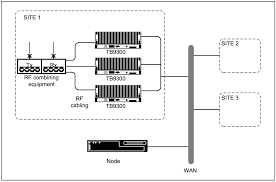What Is WSSUS? Exploring Wide Sense Stationary Uncorrelated Scattering
telcomatraining – In wireless communication and signal processing, Wide Sense Stationary Uncorrelated Scattering (WSSUS) is a fundamental concept that characterizes the behavior of signals in multipath environments. Understanding WSSUS is crucial for optimizing system performance, designing efficient communication protocols, and ensuring reliable data transmission.
Breaking Down WSSUS
The term WSSUS combines two distinct properties of wireless channels:
- Wide Sense Stationary (WSS): A process is said to be wide-sense stationary if its statistical properties, such as mean and autocorrelation, do not change over time. In the context of wireless communication, this implies that the channel’s characteristics, such as fading or attenuation, remain statistically constant over a specific observation period.
- Uncorrelated Scattering (US): This property refers to the assumption that the multipath components arriving at the receiver are statistically uncorrelated. In other words, each path that the signal takes contributes independently to the overall received signal, without interference from other paths.
Together, these properties form the WSSUS model, which simplifies the analysis and modeling of wireless communication channels.
The Role of WSSUS in Wireless Communication
Wireless signals often propagate through complex environments where they encounter obstacles such as buildings, trees, and other objects. This leads to multipath propagation, where the transmitted signal takes multiple paths to reach the receiver. As a result, the received signal is a combination of multiple reflected, refracted, and scattered components.
The WSSUS model helps engineers and researchers understand how these multipath components behave over time and frequency. By assuming that the channel is WSSUS, they can simplify the analysis and focus on key factors affecting signal performance, such as:
- Fading: Variations in signal amplitude caused by interference between multipath components.
- Doppler Shift: Frequency changes due to the relative motion between the transmitter and receiver.
- Delay Spread: The time dispersion of the received signal caused by differences in path lengths.
Mathematical Representation of WSSUS Channels
A WSSUS channel is typically described using its time-variant impulse response, h(t,τ)h(t, \tau), where:
- tt represents the time index.
- τ\tau denotes the delay associated with each multipath component.
The autocorrelation function of h(t,τ)h(t, \tau), denoted as Rh(t,τ;t′,τ′)R_h(t, \tau; t’, \tau’), quantifies how the impulse response varies over time and delay. For a channel to be WSSUS, this function must satisfy two key conditions:
- Wide Sense Stationarity: The autocorrelation depends only on the time difference, Δt=t−t′\Delta t = t – t’, rather than the absolute values of tt and t′t’.
- Uncorrelated Scattering: The multipath components are uncorrelated, meaning Rh(t,τ;t,τ′)=0R_h(t, \tau; t, \tau’) = 0 for τ≠τ′\tau \neq \tau’.
Applications of WSSUS Modeling
WSSUS modeling plays a vital role in various aspects of wireless communication:
- Channel Estimation: WSSUS simplifies the design of algorithms for estimating channel parameters, enabling more accurate predictions of signal behavior.
- System Design: Engineers use WSSUS assumptions to optimize the performance of communication systems, such as 5G networks, by mitigating the effects of multipath fading and interference.
- Simulation and Testing: WSSUS models are often used in simulations to replicate real-world wireless environments, providing a controlled setting for testing new technologies.
Limitations of WSSUS
While the WSSUS model is widely used due to its simplicity, it has limitations. Real-world channels may not always exhibit perfect stationarity or uncorrelated scattering, especially in dynamic environments with high mobility or complex terrain. In such cases, more advanced models, such as non-stationary or spatially correlated channel models, may be required.
Conclusion
Wide Sense Stationary Uncorrelated Scattering (WSSUS) is a cornerstone concept in wireless communication, offering a practical framework for analyzing and modeling multipath channels. By assuming stationarity and uncorrelated scattering, the WSSUS model simplifies complex signal behavior, making it easier to design robust and efficient communication systems. As wireless technologies continue to evolve, understanding and applying the principles of WSSUS remains a key aspect of ensuring reliable and high-performance connectivity.







